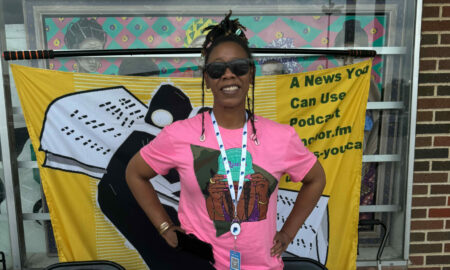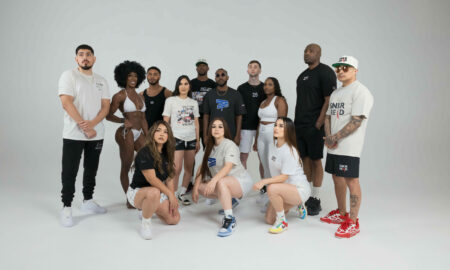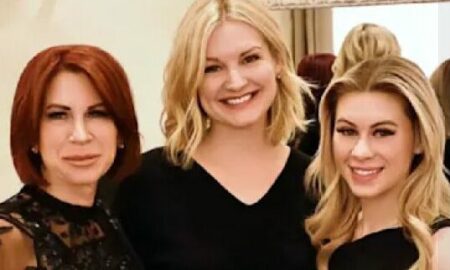

Today we’d like to introduce you to Laurin McCracken.
Laurin, let’s start with your story. We’d love to hear how you got started and how the journey has been so far.
I am an architect and practiced almost 50 years. Most of that time I ran the marketing departments for large architectural and engineering practices. The year I turned 60, I had the opportunity to take six weeks of watercolor classes, 3 hours each Sunday evening. About all I knew about the medium was that it is a very process driven approach to painting. I had taken a printing course in college in place of a watercolor course. It immediately felt comfortable. I started painting every spare minute, buying and studying many “how To”. Books After a couple of year of painting alone, I started entering watercolor society member competitions to help determine if what I was doing was any good and my paintings not only got into the shows, they won awards.
I started submitting my work to the national art magazines such as American Artist and Watercolor Artist. I received cover story coverage. This gave me the courage to enter the top watercolor competitions and try to become a signature member in the top watercolor societies. Within 4 years I had become a Signature Member of 16 of these societies.
I am currently the President of the Watercolor USA Honor Society.
Has it been a smooth road?
I has been a surprisingly smooth flow from being an unknown, beginning watercolorist to one of the nation’s and one of the world’s top watercolorists.
The major change I made early was to refocus what I painted. I had started out painting flowers. The books advise you to paint what you know. I grew up in Mississippi and so I painted Magnolias and roses. That served me well. My paintings received a lot of awards, especially for my big yellow flowers. Then I stepped back and said to myself – a lot of watercolorists paint flowers. From my experience as an architectural marketer, I knew a bit about differentiation, I told myself that I needed to find a unique subject to paint, something that I could make my own.
The editor of American Artist magazine, Stephen Doherty, after he had found out that I had traveled extensively in the US, Europe and Japan and has visited a lot of art museums, asked me what paintings had had the biggest impact on me. I responded that it was the Dutch and Flemish still life paintings of the 16th and 17th century.
About that time I had access to the heritage silver and crystal belonging to families in the Mississippi Delta. I had to determine how to paint silver and crystal. I did that and launched the second phase of my career.
So let’s switch gears a bit and go into the Laurin McCracken Watercolors story. Tell us more about the business.
I am a solo painter. I set up my own still life arrangements and photograph them. I also still visit people’s homes where I have access to their silver and crystal closets and photograph a still life either in their dining room, their kitchen or a guest bedroom.
While I still do some crystal and silver still life paintings, I believe that an artist needs to change and grow. I have been painting a series of nostalgic paintings using toys, canning jars, children’s blocks and quilts. I am exploring different color combinations, since the silver and crystal paintings tended to be rather monochromatic. I am also looking for different textures to challenge me. I am starting a series about trains.
I am most proud of, and surprised by, how well my paintings have been received in the international market. I have been in quite a number of competitive and invitational exhibitions in China. I am the only watercolorist from the US that has been included in the last four exhibitions of The Beijing Biennale. Two of my pieces from that exhibition have been purchased by the National Art Museum of China.
How do you think the industry will change over the next decade?
The sales of fine art is great impacted by the swings in the economy. This is particularly true of the price point where I am in the art markets, both here and abroad. I was selling very well in China, then the government revalued the Yuan and most of my clients lost more than 20% of the value of their businesses and monetary holdings. I have sold virtually nothing there for the past two years.
The last recession hit the middle of the US art market very hard. Many of the galleries in Santa Fe shuttered their stores. But, the economy of the US and the world is very cyclical. The current cycles are much longer than they have traditionally been. The economy is slowly improving and that will continue. The Chinese economy will come back.
I keep painting and researching how the art market is shifting in the US and world market. New art centers are emerging while many old ones are declining. I will be shifting my focus to some of the new art markets, such as Charleston.
While I will continue to be active in Europe, I do not expect to sell many paintings there. The economy of most of the European countries are at an all-time low. I will continue to respond to invited exhibitions and my participation in the large watercolor events in Fabriano, Italy. For me it is an effort in continually learning from other top artists, expanding my network and enjoying an expanded world of art and friendships in art.
Pricing:
- Different cities buy art at different price points. Memphis, TN, collectors like to pay betwen $350 – $500. Carmel sells at top prices.
Contact Info:
- Address: 6938 Mesa Drive
Fort Worth TX 76132 - Website: www.Lauringallery.com
- Phone: 8177732163
- Email: laurinmc@aol.com







Getting in touch: VoyageDallas is built on recommendations from the community; it’s how we uncover hidden gems, so if you know someone who deserves recognition please let us know here.

















